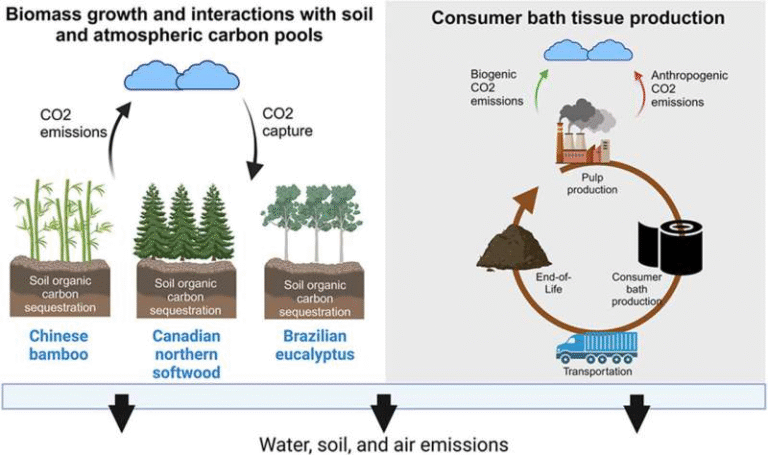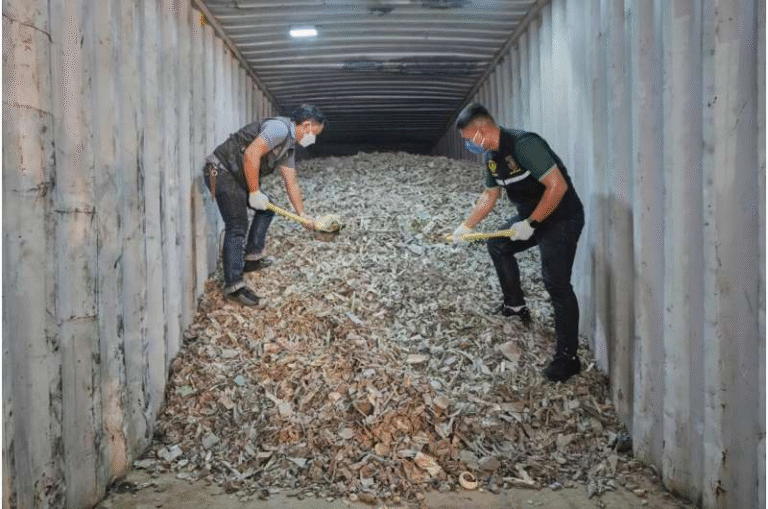Radiocarbon Analysis of Turfgrass Offers Cities a New Way to Track Greenhouse Gas Emissions

Cities everywhere are pushing hard to cut down on climate-warming emissions, but a huge challenge remains: how can they actually measure whether fossil fuel carbon dioxide is truly decreasing at the local level? A new study from researchers at the University of California, Irvine presents a practical and surprisingly accessible solution, using something nearly every city already has—managed turfgrass.
This research, published in the Journal of Geophysical Research: Atmospheres, explains how regularly mowed grass can serve as a reliable indicator of recent carbon dioxide conditions. The method works because turfgrass absorbs carbon from the atmosphere as it grows. By analyzing the radiocarbon (¹⁴C) in these grass clippings, scientists can estimate how much of the absorbed carbon came from fossil fuel sources. Fossil carbon lacks ¹⁴C entirely, so a drop in radiocarbon levels is a clear sign of higher fossil fuel CO₂ in the air.
The study was led by former UC Irvine doctoral student Cindy Yañez, with Earth system science professor Claudia Czimczik as senior author. Their team also collaborated with greenhouse gas experts, including Manvendra Dubey from Los Alamos National Laboratory, who provided the atmospheric CO₂ instrumentation used for comparison.
Why Turfgrass Works as a Climate Monitoring Tool
The idea builds on a previous UC Irvine and UC Riverside project during the COVID-19 pandemic, when volunteers across Southern California sent researchers samples of invasive grasses from their neighborhoods. That earlier work revealed a dramatic drop in fossil fuel CO₂ during the early lockdown period, followed by rising emissions as life returned to normal.
However, invasive grasses only grow during certain seasons. For year-round monitoring, the researchers turned to managed lawns—the standard turfgrass that gets mowed regularly in parks, sports fields, home yards, and public spaces.
Mowed grass offers a major advantage: the tops of the blades represent about two weeks of growth in Southern California, because lawns are typically trimmed every one to two weeks. That means each sample integrates roughly two weeks of atmospheric CO₂ exposure, giving cities a clear and consistent snapshot of recent emissions.
By collecting samples across urban and rural regions of Southern California, the team mapped what they call urban carbon dioxide domes—areas where CO₂ concentrations build up due to human activity and the region’s unique geography.
Los Angeles as a Testbed
Los Angeles is a near-ideal laboratory for this kind of research because its famous basin, surrounded by mountains, tends to trap air masses. Emissions accumulate rather than dispersing quickly, making fossil fuel CO₂ patterns easier to detect.
The researchers paired their turfgrass sampling with in-situ atmospheric CO₂ measurements, using instruments that quantify total CO₂ concentration. These readings allowed the team to compare plant-recorded fossil fuel CO₂ with instrument-recorded atmospheric CO₂. The result was a strong alignment between the two, confirming that turfgrass radiocarbon effectively captures short-term fossil fuel CO₂ variations.
They also observed that turfgrass samples clearly showed differences between urban and rural sites. Urban locations consistently showed enhanced fossil fuel CO₂, while rural areas showed lower levels, as expected.
The Practical Benefits for City Governments
One of the biggest hurdles for cities trying to meet climate goals is the lack of affordable, spatially detailed monitoring tools. Traditional greenhouse gas monitoring often relies on:
- Dedicated CO₂ towers
- Satellite measurements
- Airborne sensors
- Dense instrument networks
These systems are expensive, technically complex, and simply not available in many cities.
By contrast, turfgrass radiocarbon analysis offers:
- High spatial coverage: You can sample lawns practically anywhere.
- Low infrastructure requirements: No need for new monitoring equipment in the field.
- Consistent time windows: Regular mowing gives uniform sampling intervals.
- Better local resolution: The method can reveal neighborhood-scale emissions patterns.
The researchers describe the method as both practical and spatially sensitive, making it especially useful for municipalities lacking robust CO₂ monitoring infrastructure.
How Radiocarbon Reveals Fossil Fuel Emissions
To understand why this method works so well, it helps to know how radiocarbon functions.
Carbon in the atmosphere exists partly as radiocarbon (¹⁴C), a naturally occurring radioactive isotope. Living plants continuously absorb CO₂—and therefore radiocarbon—from the atmosphere.
However, fossil fuels are millions of years old. Over that long timescale, their ¹⁴C has fully decayed. So when cities burn fossil fuels, they release radiocarbon-free CO₂ into the air. This extra CO₂ dilutes the atmospheric radiocarbon signature.
By measuring how much radiocarbon appears in plant tissue, scientists can calculate how much of the CO₂ around the plant came from fossil sources versus modern biological sources.
Turfgrass provides an especially clean signal because the short growth window minimizes long-term averaging. Each sample represents a tight, recent snapshot.
Challenges and the Need for Broader Testing
While the method worked well in Los Angeles, the researchers emphasize that it needs to be tested in more cities with different meteorological conditions.
Los Angeles benefits from relatively stable atmospheric patterns, with mountains that help trap emissions. Other cities—especially ones with open plains, stronger winds, or coastal dispersal—may require adjustments or produce different sensitivities.
Additionally, sampling depends on the presence of regularly mowed lawns. Regions with different vegetation types or different land-management practices might need alternative plant species or modified approaches.
The Bigger Picture: Radiocarbon in Climate Science
Radiocarbon analysis has long been used in atmospheric science and ecology for:
- Tracking fossil fuel contributions to the global carbon cycle
- Studying ocean-atmosphere carbon exchange
- Measuring carbon turnover in soils
- Estimating age and origin of carbon in rivers and wetlands
Using radiocarbon in turfgrass is a relatively new adaptation of the method, offering a way to translate the technique from broad global studies to high-resolution urban monitoring.
It also complements more traditional atmospheric measurements. When plant-based radiocarbon data is paired with direct CO₂ readings, scientists can distinguish between:
- C_ff (fossil fuel-derived CO₂)
- C_bio (biogenic CO₂ from plants, soil microbes, etc.)
This separation is crucial for cities because climate targets generally focus on reducing fossil emissions, not natural biological fluxes.
What This Means for the Future of Urban Climate Policy
Measuring emissions accurately is essential for tracking progress toward carbon-neutrality goals. Cities cannot rely solely on emissions inventories, which often depend on estimates rather than direct measurements.
A cost-effective, widely deployable monitoring method could:
- Help cities identify emission hotspots
- Provide real-world evidence of progress (or lack thereof)
- Support more detailed urban planning
- Validate the impact of local initiatives (low-emission zones, transit expansions, etc.)
- Strengthen public transparency around climate action
As the researchers note, the method’s ease of sampling makes it especially promising for cities that cannot afford expensive CO₂ sensor networks.
Final Thoughts
This study highlights an innovative way to monitor urban emissions using something as ordinary as grass clippings. The approach is grounded in robust atmospheric science, yet accessible enough that cities worldwide could potentially adopt it. With further testing in different climates and urban layouts, turfgrass radiocarbon analysis may become a key tool in the global effort to monitor and reduce fossil fuel emissions.
Research paper:
Quantifying Fossil Fuel CO₂ Enhancements Along an Urban-Rural Gradient With Radiocarbon Analysis of Turfgrasses
https://doi.org/10.1029/2025JD043336





